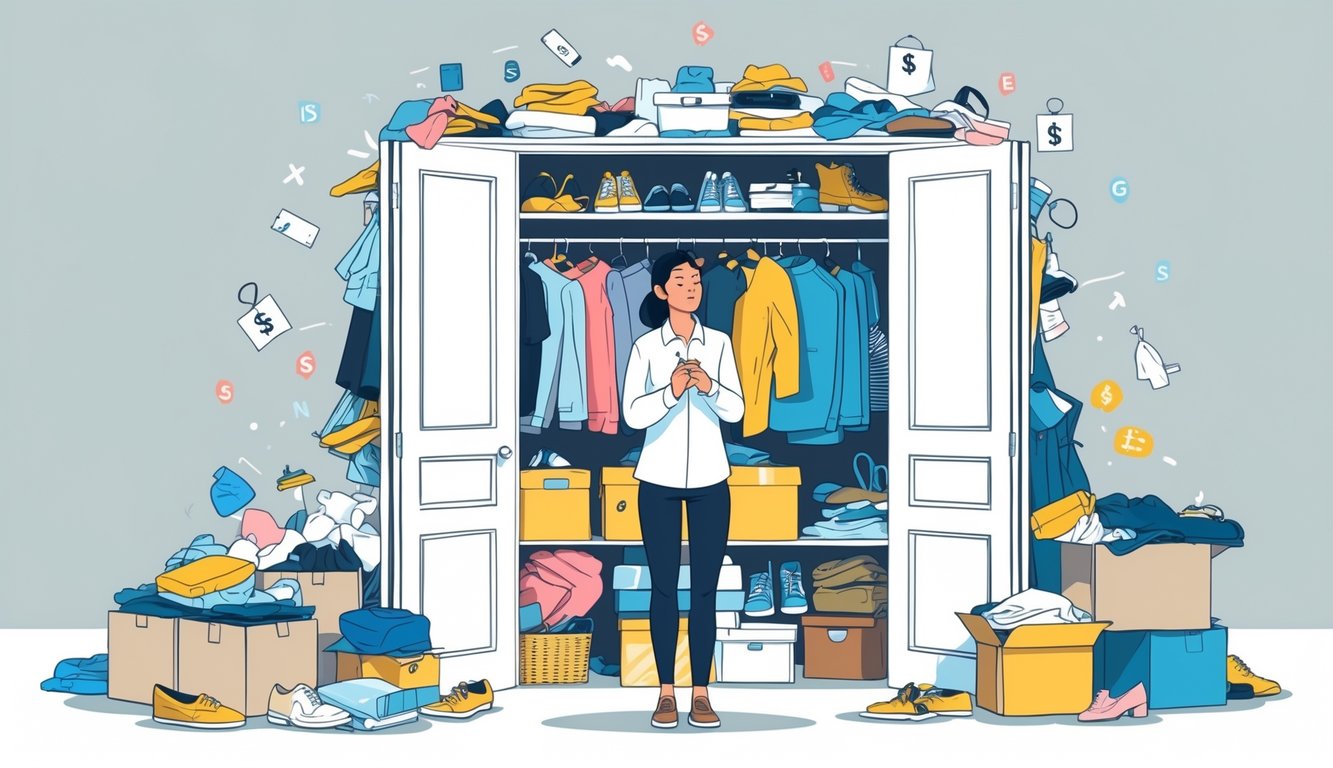
Halfway through chucking a heap of neon tank tops (I swear they multiplied), I keep yanking out crumpled receipts from random pockets—do stores secretly bet on us never returning this stuff, or am I just hopeless? Every time I stare at a mountain of fast fashion rejects, it’s painfully obvious: every “just this once” buy is basically tomorrow’s clutter, siphoning off dollars and closet space, and for what? My last closet purge made it hilariously obvious: all those tiny “treat yourself” purchases? They add up, quietly, until you’re left with no room for the stuff you actually wear.
Retailers must love this mess. Apparently over $100 billion a year gets blown on impulse buying. Families with kids? They’re even more likely to toss random junk in the cart (84% in Australia, which, okay, but does anyone ever find matching socks again?). The so-called organizing experts keep saying a closet cleanout won’t fix your life, but yeah, it’ll force you to admit what those buy-one-get-one leggings really cost—emotionally, financially, probably existentially.
But what really gets me is how past-me seemed allergic to basic logic. Like, did I black out when I bought my fifth identical black tee? I barely wore any of them after the second wash, but still, I kept getting suckered by .95 price tags and “last chance” signs no one remembers. I think my dry cleaner’s getting rich off my impulse control issues. Who’s the real winner here?
Understanding Impulse Buying
Jackets with tags, leggings wedged between duplicate black jeans—do I notice any of this until I’m in a panic, cramming stuff into donation bags? Nope. By then, return windows are closed and I’m left with a pile of “what was I thinking?” moments. Most of these purchases weren’t even planned; they just showed up, attached to a split-second thrill and an immediate pang of regret. It’s not flattering, but apparently, I’m not alone—impulse buying is practically a group sport.
The Psychology Behind Impulse Buys
Sometimes I’ll fall for a moisturizer just because it’s “limited edition” and screaming at me under those migraine-inducing store lights. Retailers? They know exactly what they’re doing. I read this Medium article breaking down how checkout displays are basically traps.
The wild part? That little dopamine spike, the “ooh, new thing!” moment, it wipes out budgeting sense instantly. Actual psychologists (the real ones, not TikTokers) say this unpredictability is part of the “hunt” thrill. I mean, dopamine gets blamed for everything, but I can feel it: the mental cheer squad before I swipe my card and then instantly regret it. I’ll tell myself, “I deserve this scarf, it’s a treat,” and totally ignore the five other scarves gathering dust. Add in those targeted ads and “ends tonight!” banners, and yeah, sometimes I just cave.
Unplanned Versus Planned Purchases
Is there actually a difference between “impulse” and “unplanned”? I’m not convinced. Weinberg and Gottwald (they write for Sage) claim the line’s blurry on purpose. Planned buys have some logic—like, I need a winter coat because I’m cold, not because it’s 40% off.
But unplanned? That’s the $8 tee at checkout, or a milk run that morphs into a $40 snack haul. The only thing that’s clear is impulse buys never start with intention. Retail stats claim over 62% of shoppers add at least one unplanned item per trip. (Honestly, I’m surprised it’s not higher.) And my rationalizations are always the same, especially during sales: “Oh, I’ll use this eventually.” Sure.
Emotional Triggers and Instant Gratification
Nobody warns you how fast stress shopping sneaks up. I’ll doom-scroll on a deadline, and—boom—some weird gadget or another blanket lands in my cart. Boredom, stress, even a weirdly good mood after work? Straight to checkout.
Apps make it worse. Loyalty points, countdowns, “only 2 left!”—all engineered to make me feel like buying is an achievement. Studies say feelings win over logic, especially when there’s some fake reward for buying now.
And honestly, who pauses to think, “Will these shoes make me happy next week?” I don’t. The pleasure lasts, what, fifteen minutes? Then I’m back to shoving things under the bed. Sometimes I wonder if the trick isn’t resisting, but just noticing the exact second an impulse tries to disguise itself as a “need.”
Why We Accumulate So Many Clothes
I open my closet and—immediately—shirts with tags stare me down. Like, who bought these? Three pairs of nearly identical jeans, all unworn for months. It’s not just me; apparently Americans average 300,000 items per home. That stat lives rent-free in my brain every time I can’t find my black sweater.
Retail Therapy and Shopping Tendencies
So, why do I keep buying crap I don’t need? Mood swings, boredom, post-breakup spirals, whatever. That “must-have” dress after a bad day or novelty socks because Instagram told me to—half my closet, right there. Dr. Susan Albers (she’s a real psychologist, not a “mindset coach”) says shopping triggers dopamine, so yeah, scoring another cardigan feels like a victory—until I’m broke and out of hangers.
There’s no logic. I’ll buy something in three colors, convinced it’ll organize my life. It never does. When I moved last year, I realized 80% of my spontaneous buys never even made it into my regular rotation, but tossing them felt like erasing memories. The dumbest part? I can’t even remember most of those “victories.”
The Influence of Marketing Tactics on Spending
Scrolling, walking through stores, whatever—brands are always lobbing FOMO bombs. Sale clocks, “last chance” popups, influencer drops—suddenly, a basic tee feels like a once-in-a-lifetime event. Marketers invent urgency, and I fall for it. The sunk cost fallacy? That’s me, every time.
I know those “BOGO” deals work because I keep falling for them. The Minimalists break down how marketing tricks—from banners to in-store psychology—nudge us into overconsumption (see here). Even “limited edition” sneakers or collabs crank up the pressure, even for stuff I’d ignore on a normal day. So, do I need more joggers, or am I just tired and easily influenced? No clue. Marketing says both.



